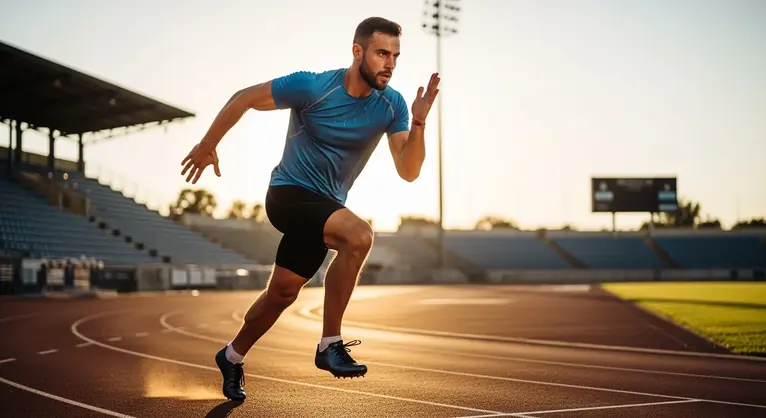Bounce Back Stronger: A Holistic Guide to Recovery & Injury Prevention for Every Athlete
Introduction
- Hook: Have you ever pushed yourself in training, only to hit a setback from an injury?
- Overview: Why effective recovery and injury prevention matter for beginners, lifelong fitness fans, and seasoned athletes alike.
Understanding the “Why” Behind Injury Prevention
- Briefly outline the impact of injuries on long-term progress.
- Discuss evidence-based frameworks (van Mechelen, TRIPP, adaptive models) and why a strategic approach wins over luck.
Key Principles for Staying Injury-Free
Know Your Risks
- List common injuries (sprains, strains, overuse).
- Discuss the importance of awareness and education for early intervention.
The Power of Preparation
- Effective warm-ups and cool-downs explained with examples.
- Value of progressive training and proper technique.
Recovery Done Right: Practical Strategies
Nutrition for Healing
- Quick guide to essential nutrients for muscle repair.
- Actionable hydration tips. For a deeper dive into the benefits of vitamin C in athletic recovery and injury prevention, check out vitamin C immunity athletes.
Tools of the Trade
- Analysis of useful gadgets: foam rollers, massagers, compression wear, tracking apps.
- How tech can help monitor and accelerate recovery.
Psychological Tactics
- Motivation hacks: Goal setting, social support, and maintaining a positive mindset during rehab.
Creating a Sustainable, Everyday Routine
- Tips for turning best practices into habits.
- Involving your gym friends, coaches, or even family for accountability.
- Case study: How pro teams or Cirque du Soleil use adaptive frameworks to boost outcomes.
Conclusion
- Empower readers: Injury isn’t the end—it’s a chance for a better comeback.
- Call to action: Adopt these principles and share your recovery progress in the GymPulse community.
Additional Guidance:
- Tone is conversational but credible, mirroring a trusted coach.
- Embed relatable analogies—e.g., “Think of preventing injuries like tightening the bolts before a long bike ride.”
- Ensure the article reflects lived expertise and addresses the audience directly.
- Avoid jargon; break down key ideas with bullet points and clear subheadings.
- Include at least one mini case-study or real-world example.
- Close with encouragement and next steps (e.g., community engagement, self-driven learning).
With this structure, the article will be thorough, actionable, and people-first, fully aligning with Google’s E-E-A-T and page experience guidelines.
Now, let’s write the article!
Bounce Back Stronger: A Holistic Guide to Recovery & Injury Prevention for Every Athlete
Why Injury Prevention Matters
Ever felt unstoppable during a workout—only to be sidelined by a strain, sprain, or lingering ache? Whether you’re a gym newbie or a pro athlete, injuries disrupt goals and drain motivation. The good news? Most injuries aren’t just bad luck. They’re often preventable with the right knowledge and habits.
Modern sports science gives us powerful frameworks to tackle injuries head-on. The van Mechelen model, the TRIPP framework, and adaptive, context-driven strategies (like those used by Cirque du Soleil) show that prevention isn’t just about stretching or hoping for the best. It’s about understanding risks, adapting to your unique circumstances, and building routines that keep you strong over the long haul.
Key Principles to Stay in the Game
Know Your Risks
Imagine going on a road trip: you’d check your tires and fuel, right? Think of your body the same way. Common problems like sprained ankles, pulled muscles, and overuse injuries crop up when you push too hard, too fast, or ignore small warning signs.
- Watch for: Sudden sharp pains, lingering soreness, or fatigue that sticks around after rest.
- Start every new activity with basic education—learn the most frequent injuries and how to avoid them.
The Power of Preparation
Preparation beats panic. Warming up with dynamic moves wakes up your muscles and joints. Cooling down after exercise clears out waste products and kickstarts recovery.
- Try this: Start sessions with five minutes of light movement, add mobility drills specific to your sport, and finish with easy stretching.
- Train smart: Mix high and low-intensity days. Practice good form, even if you’re lifting lighter weights.
Recovery Hacks for Real Results
Nutrition: Fuel for Repair
What you eat directly impacts how quickly you bounce back.
- Prioritize protein (chicken, lentils, Greek yogurt) for muscle repair.
- Add vitamin C (citrus, berries) and vitamin D (sunlight, eggs) to boost tissue healing.
- Don’t forget omega-3s (salmon, chia seeds) and zinc (nuts, whole grains).
- Hydrate well—water helps clear out damaged cells and supports every process in your body.
Tools & Tech to Speed Up Recovery
Gadgets aren’t just flashy—they work when used right.
- Foam rollers and massage guns help release tight spots and reduce soreness.
- Compression sleeves can cut swelling and boost blood flow.
- Wearable trackers (like smart watches or fitness bands) monitor sleep, activity, and recovery—helping you spot patterns before problems explode.
Mind Over Matter: The Psychological Edge
Staying motivated during recovery isn’t easy. Set small, clear goals—like “walk pain-free for 10 minutes” or “do rehab exercises daily.” Celebrate tiny wins, lean on friends, and remember: Professional athletes use these same tactics.
For a comprehensive approach to managing and tracking your recovery process, consider using an injury recovery checklist to keep your progress on track.
Building a Lifelong Routine
Consistency is key. Embed these habits into your daily life:
- Make warming up a non-negotiable (like brushing your teeth).
- Buddy up—share your routines with a partner or coach for accountability.
- Use tracking apps to log symptoms and progress.
- Learn from the pros: Cirque du Soleil dropped injuries 15% over four years by customizing their recovery approach.
Conclusion: Your Comeback Starts Now
Injuries aren’t roadblocks—they’re detours that teach you new routes to your goals. By mixing knowledge, planning, and the right support, you’ll not only recover, but come back even stronger.
Ready to take charge? Put these tips into action and share your journey with the GymPulse community. Let’s build a culture of strength, resilience, and lifelong athleticism—together!

